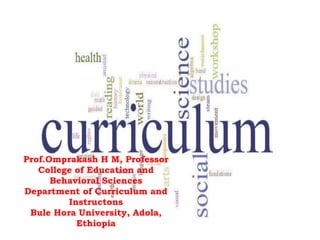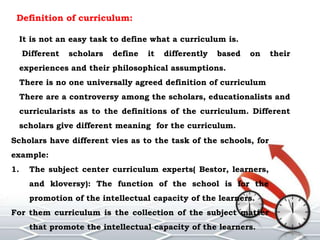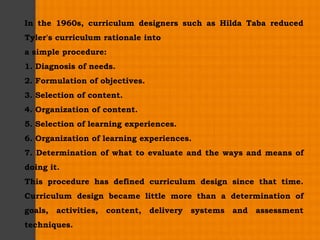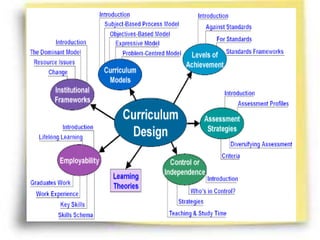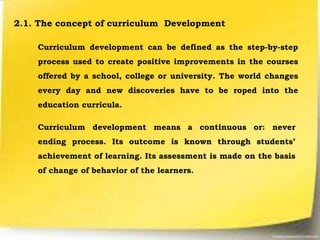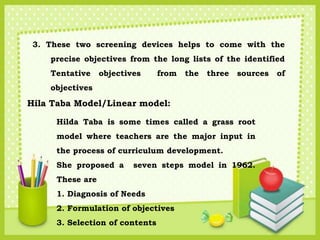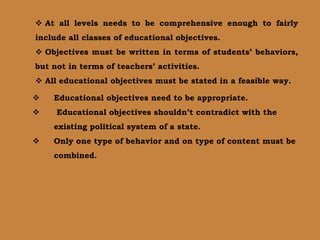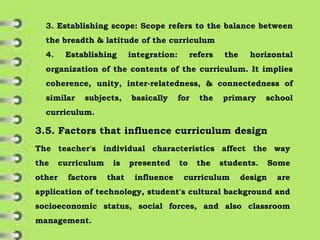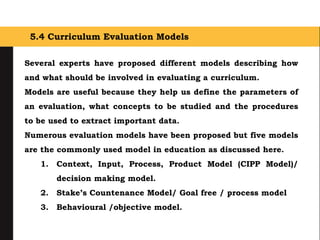The document discusses the philosophical foundations of curriculum. It explains that philosophy influences curriculum goals, content, and organization by providing perspectives on the nature and sources of knowledge. The two main philosophical theories discussed are rationalism, which views the mind as the source of true knowledge, and empiricism, which sees knowledge as derived from sense experience and the external environment. Common educational philosophies mentioned include idealism, realism, perennialism, essentialism, experimentalism, existentialism, constructivism, and reconstructivism.
